Popular tourist attractions that no longer exist
Lost wonders of the world
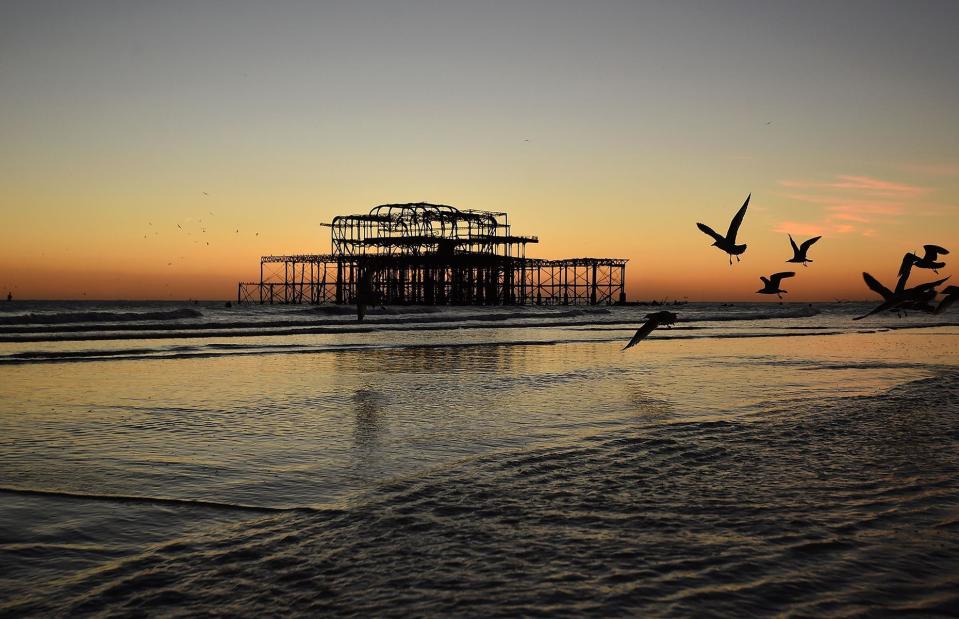
Glyn Kirk/AFP/Getty Images
The world is full of amazing travel opportunities. However, as the following pictures prove, there are some experiences that money will never again be able to buy, and some travel hotspots that have permanently disappeared from the map. Whether it's down to ecological disasters, mankind’s unthinking actions or climate change, we'll sadly never get to visit these former bucket-list attractions.
Wawoma Tree, Yosemite National Park, California, USA

Hulton-Deutsch Collection/CORBIS/Corbis via Getty Images
Back in 1881 a tunnel was carved through this 2,100-year old sequoia tree in Mariposa Grove, Yosemite National Park. By the late 1910s (when it’s likely this photograph was taken) the tree was popular with tourists, keen to be pictured driving right through the 234-foot (71.3m) high natural wonder. Even President Theodore Roosevelt visited in 1903.
Wawoma Tree, Yosemite National Park, California, USA
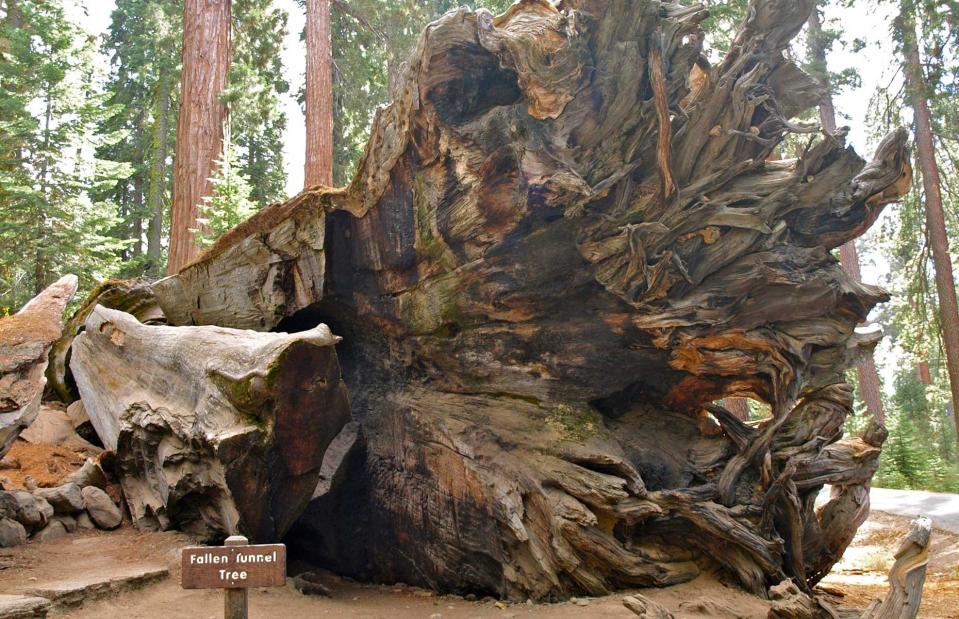
PunkToad from Oakland/via Wikimedia Commons/CC BY 2.0
But during the harsh winter of 1969 the tree toppled to the ground. The weather that year brought heavy snow weighing down the tree and dampening the soil. However, it's likely the weakening of the tree because of the tunnel itself was also a significant factor in its demise. While a remaining carved tree in Tuolumne County, California still exists, no new tree tunnels have been cut in recent times to preserve these wonders of Mother Nature.
The Azure Window, Gozo, Malta
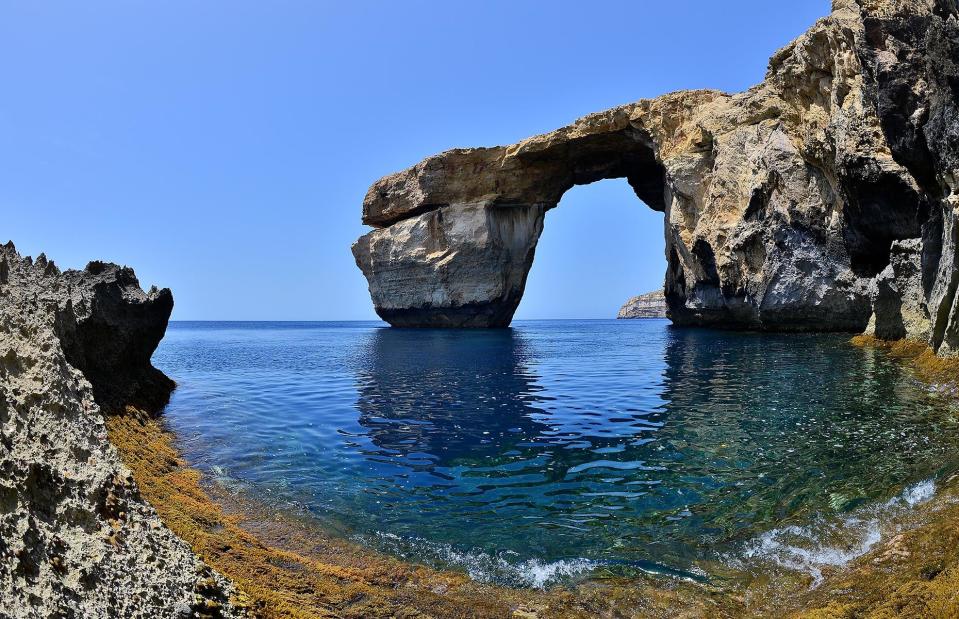
Sascha Steinbach/Getty Images
You might recognize this stunning natural formation – it’s been featured in Game of Thrones, The Count of Monte Cristo and Clash of Titans, as well as on many an Instagram feed. The arch was formed by the collapse of a coastal cave, probably in the 19th century, and was a popular spot for photographs.
The Azure Window, Gozo, Malta
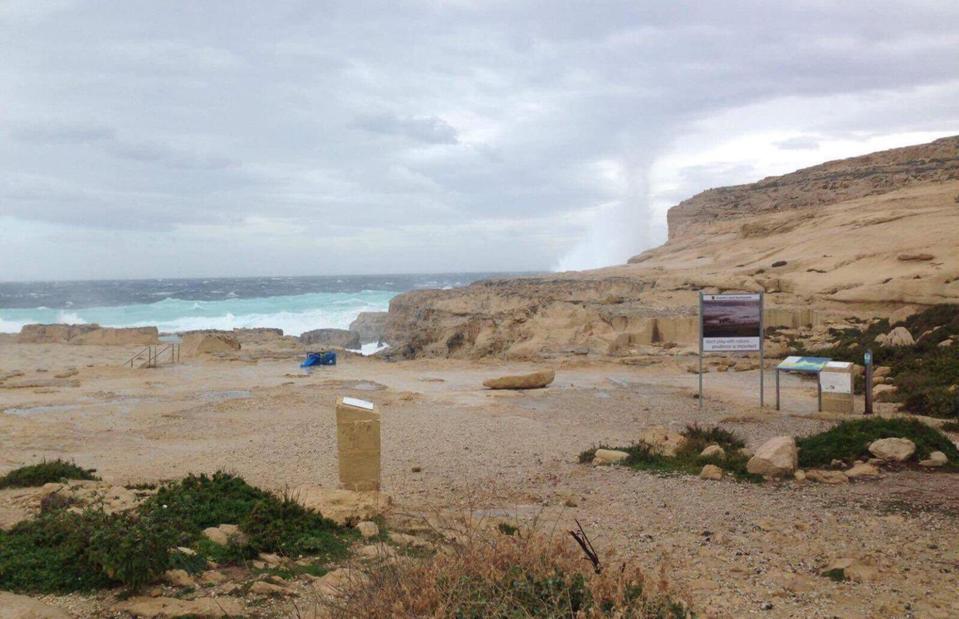
JosephMuscat_JM/Twitter
When heavy storms hit the Maltese archipelago in March 2017, the world was devastated by the announcement that the iconic arch had collapsed. However, it wasn’t all bad news, as the fallen rock formation has now added to the intrigue underwater, attracting scuba-diving enthusiasts to the area.
Buddhas of Bamiyan, Bamiyan, Afghanistan

Fars News Agency/Wikimedia Commons/CC BY 4.0
Two mammoth Buddha statues – the tallest in the world, in fact – once looked out from a sandstone cliffside in Bamiyan. They were carved in the 6th century, with the tallest topping out at 180 feet (55m). But, in 2001, these Buddhist effigies were destroyed by the Taliban.
Buddhas of Bamiyan, Bamiyan, Afghanistan
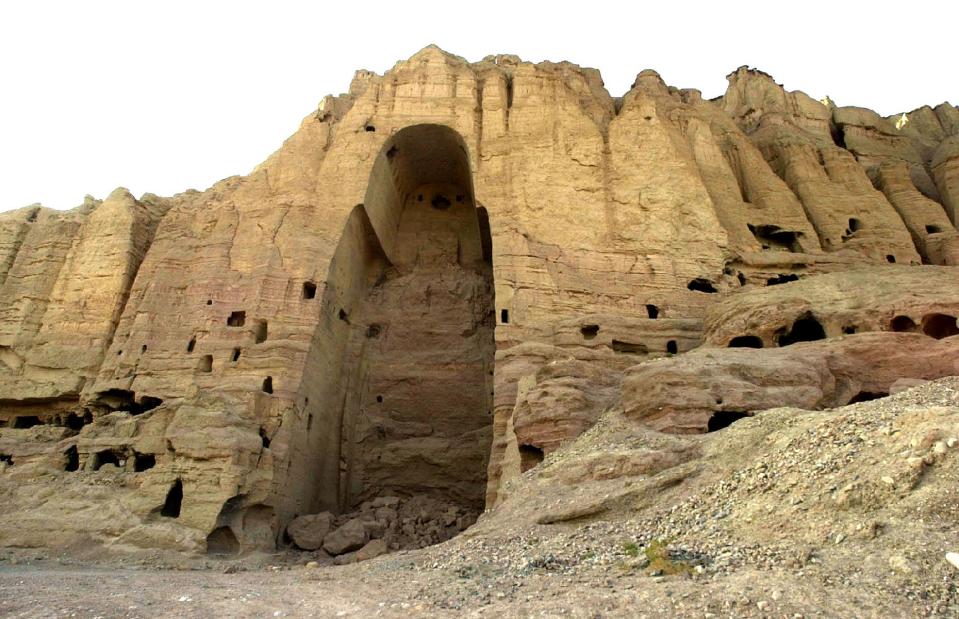
Deshakalyan Chowdhury/AFP/via Getty Images
Today vacant alcoves remain in the cliff, and the valley was labeled a UNESCO World Heritage Site in 2003. In the years since their destruction, there has been much debate about whether or not to rebuild the towering Buddhas – so far, the closest the monuments have come to being resurrected is a hologram projected in the spaces they once stood.
Duckbill Rock Formation, Oregon, USA
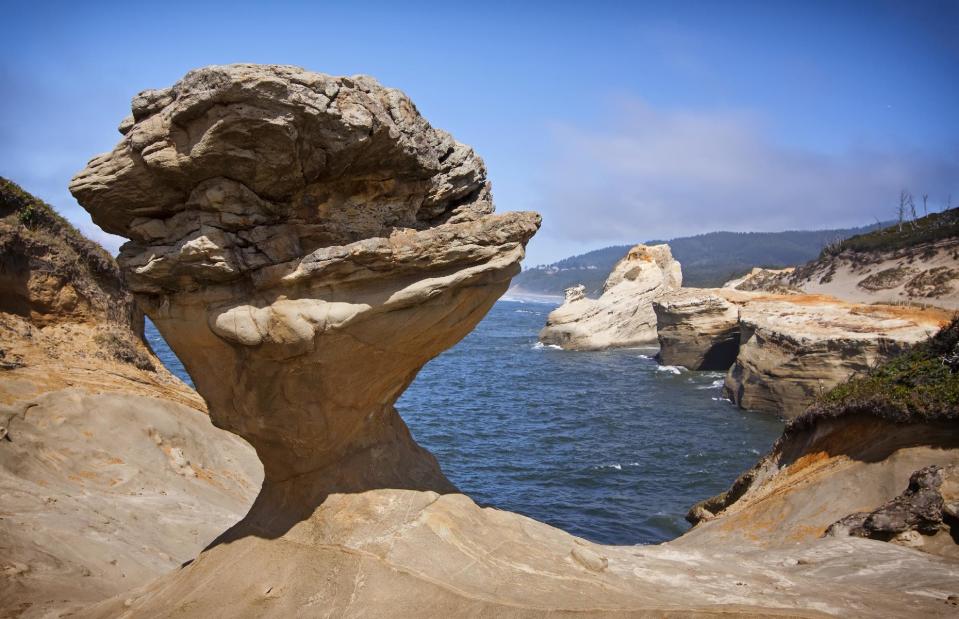
Steven Pavlov/Wikimedia Commons/CC BY 4.0
Named, as you might have guessed, for its likeness to a duck’s bill, this rock formation once drew camera-wielding tourists to Cape Kiwanda State Natural Area. The sandstone hoodoo stood around seven-foot (2m) tall and, carved out over millennia, had most likely occupied its coastal spot for millions of years.
Duckbill Rock Formation, Oregon, USA
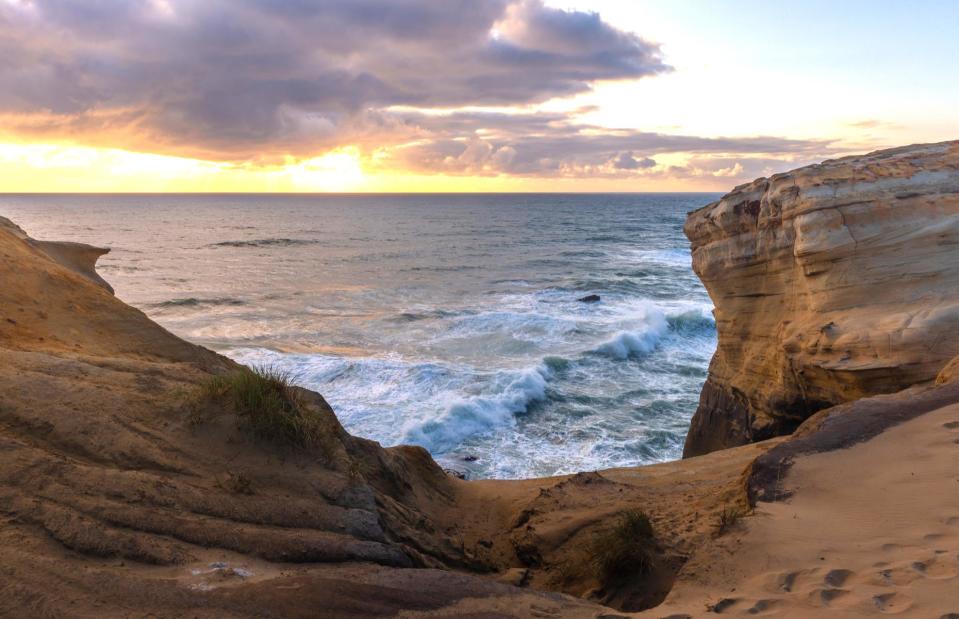
Alberto Loyo/Shutterstock
In 2016, though, the natural landmark was destroyed, and a video of vandals pushing the monument until it collapsed and crumbled emerged quickly afterwards. Now, though the famous formation is gone, Cape Kiwanda still pulls in visitors with its sweeping views of the Pacific, and its opportunities for hiking and hang gliding.
Sutro Baths, San Francisco, USA
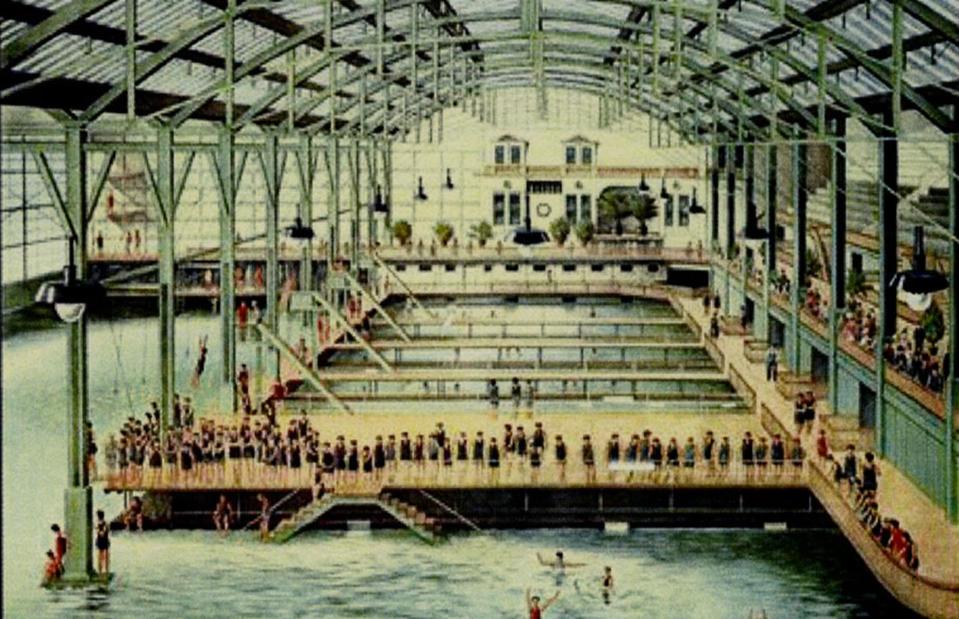
Unknown/Wikimedia Commons/CC0
If you picture San Francisco, attractions such as the Golden Gate Bridge, Alcatraz Island or Lombard Street might spring to mind. But did you know that the city was once home to the world’s largest indoor swimming pool establishment? The impressive complex included six saltwater pools and one freshwater pool, with capacity for 10,000 people.
Liking this? Click on the Follow button above for more great stories from loveEXPLORING
Sutro Baths, San Francisco, USA
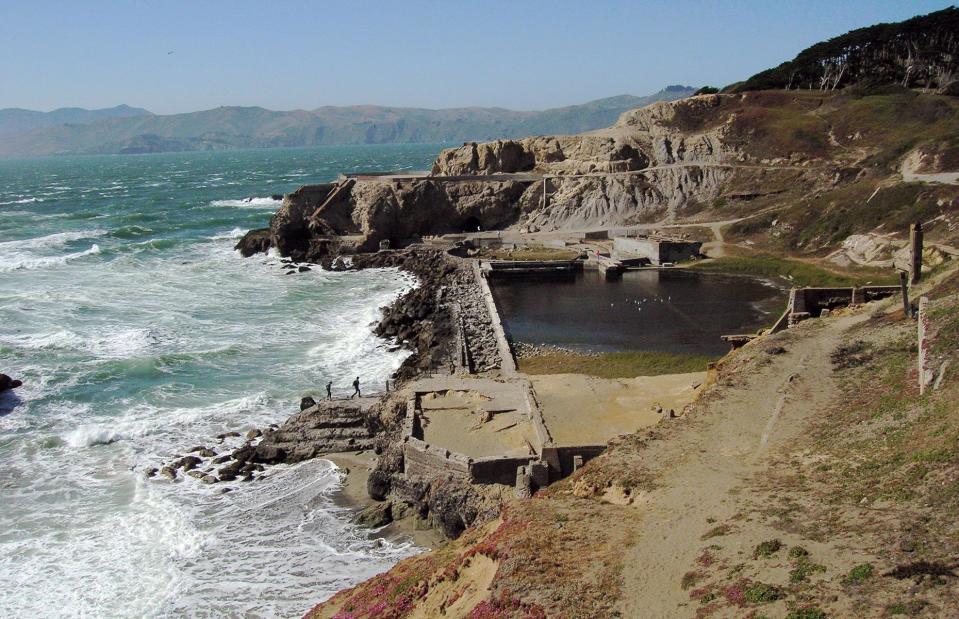
FlyingToaster/Wikimedia Commons/CC BY-SA 3.0
After struggling financially for many years, the Sutro Baths closed in 1966, and later burned down in June that same year. Now, just the foundations remain as a reminder of the Victorian attraction, with the cliffside setting making the site a popular spot for walkers.
Crystal Palace, London, UK

Fox Photos/Getty Images
Once a Victorian masterpiece, this impressive glass and steel structure was built in 1851 in London’s Hyde Park – it was later moved to Penge Place, in the south of the capital, where it remained for 82 years. In the palace's heyday, its grounds were home to a mind-boggling array of delights: a roller coaster, festivals, cricket matches and even a garden complete with model dinosaurs.
Crystal Palace, London, UK
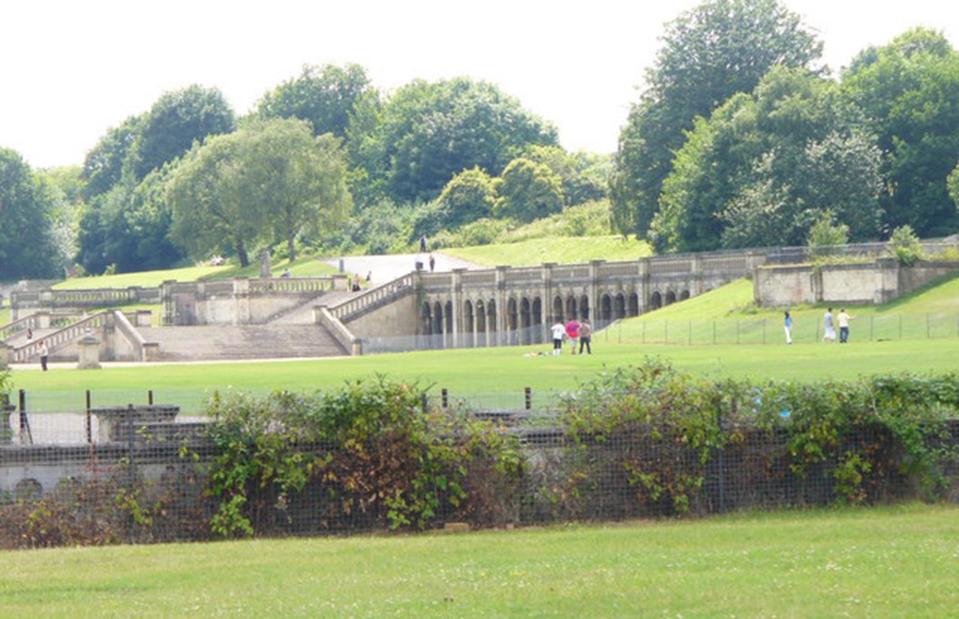
Colin Smith/Wikimedia Commons/CC BY-SA 2.0
Tragically, the building was swallowed up by a fire in 1936 – it’s still not known how the fire was started and whether or not it was intentional. Currently, remnants of the palace, including terraces, sphinxes and a huge bust of its designer, Sir Joseph Paxton, can be seen at the site, which has been renamed Crystal Palace Park.
Pink and White Terraces, Lake Rotomahana, New Zealand
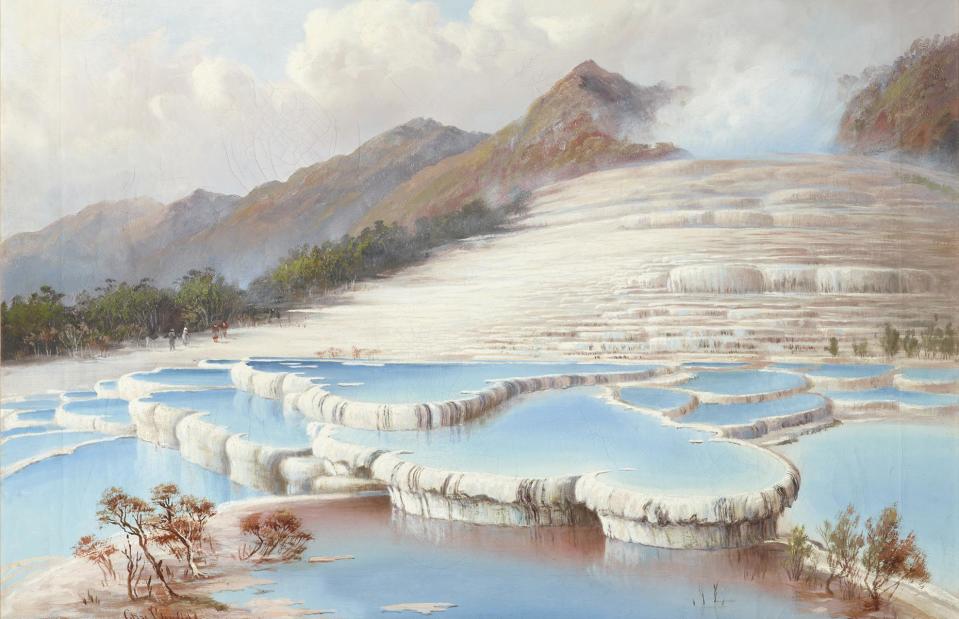
Charles Blomfield/Wikimedia Commons/CC0
Back in the mid-19th century, these gorgeous, naturally formed cascading pools attracted tourists from across the globe and were one of the biggest draws for those visiting the Southern Hemisphere. Often dubbed “the eighth wonder of the world”, they were destroyed by the eruption of Mount Tarawera back in 1886. Now their glory is captured only by a handful of paintings, like this one by English artist Charles Blomfield.
Pink and White Terraces, Lake Rotomahana, New Zealand
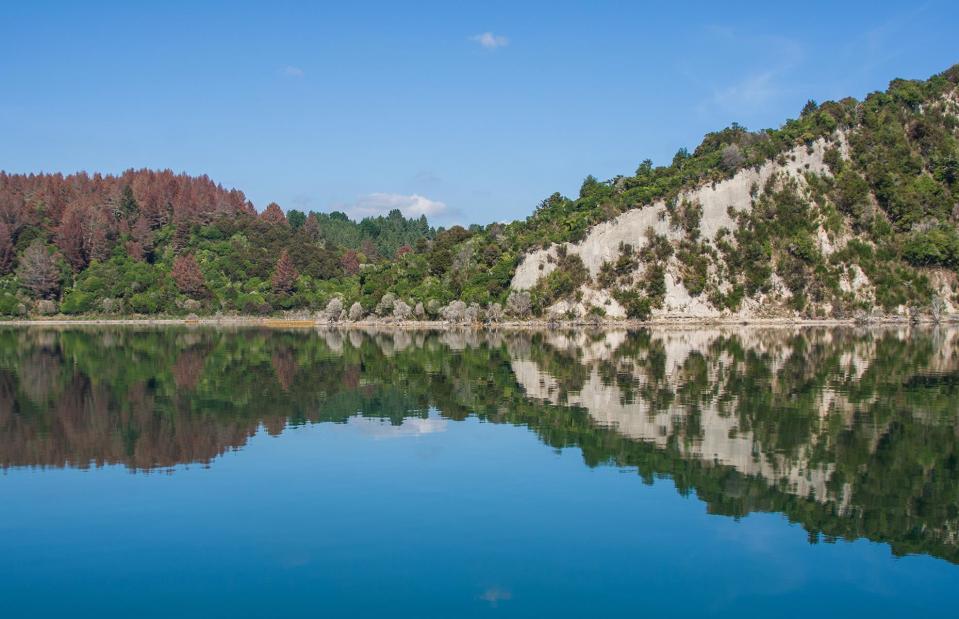
Brain Taylor/Flickr/CC BY-SA 2.0
Nowadays, Lake Rotomahana remains a beautiful sight, although the exact location of the Pink and White Terraces is not known for certain. However, researchers are using the diaries of geologist Ferdinand von Hochstetter, who wrote detailed notes on its location before the eruption, to try to pinpoint and excavate the terraces – this means they could one day be restored.
Chacaltaya glacier, Bolivia
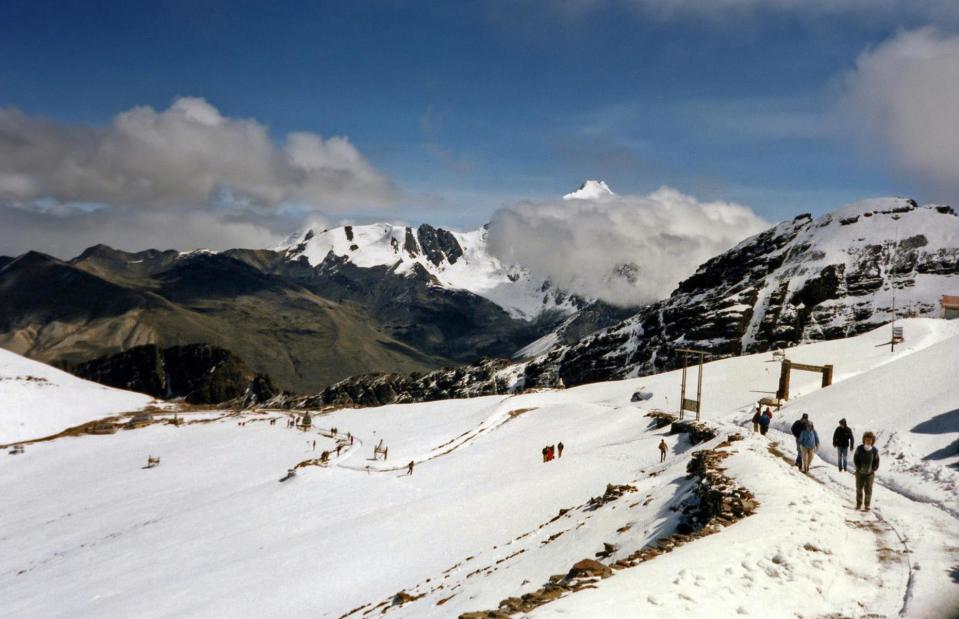
Bernard Gagnon/Wikimedia Commons/CC BY-SA 3.0
Daring skiers would once have dreamed of ticking the notoriously tough Chacaltaya mountain, the highest ski resort in the world, off their bucket lists. The ancient glacier that sits within it spanned 0.085 square miles (0.22sq km) back in 1940, but rapidly decreased in size over the years until 2009, when it completely melted away.
Chacaltaya glacier, Bolivia
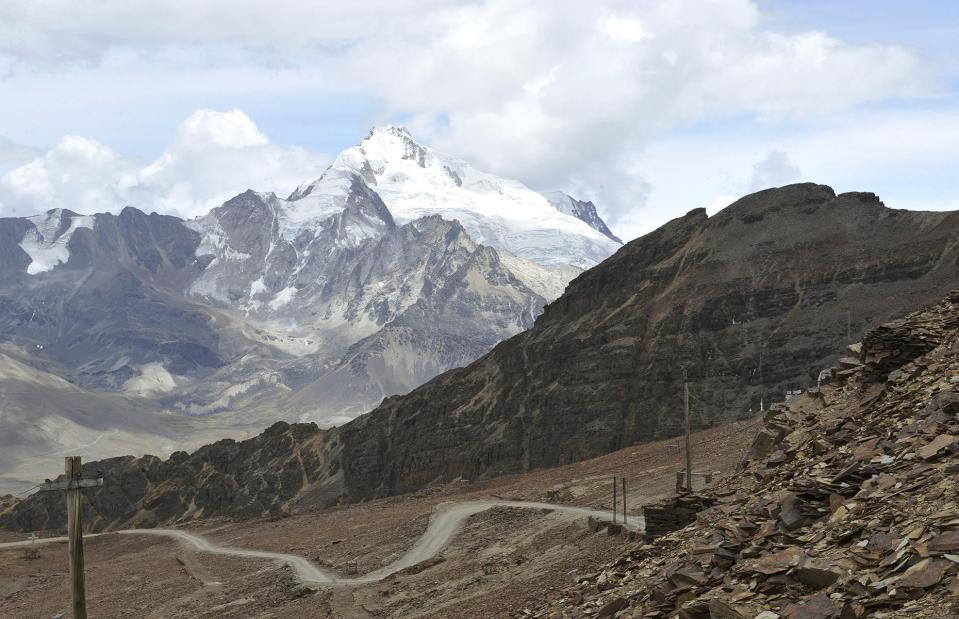
Aizar Raldes/AFP/Getty Images
In 1998 experts predicted the glacier would survive until 2015 but, due to climate change, it melted six years earlier than estimated. Today, Chacaltaya is pretty barren – but, despite the lack of skiing, it remains a popular spot with mountaineers who take on the challenging hike to its summit.
Vidámpark, Budapest, Hungary
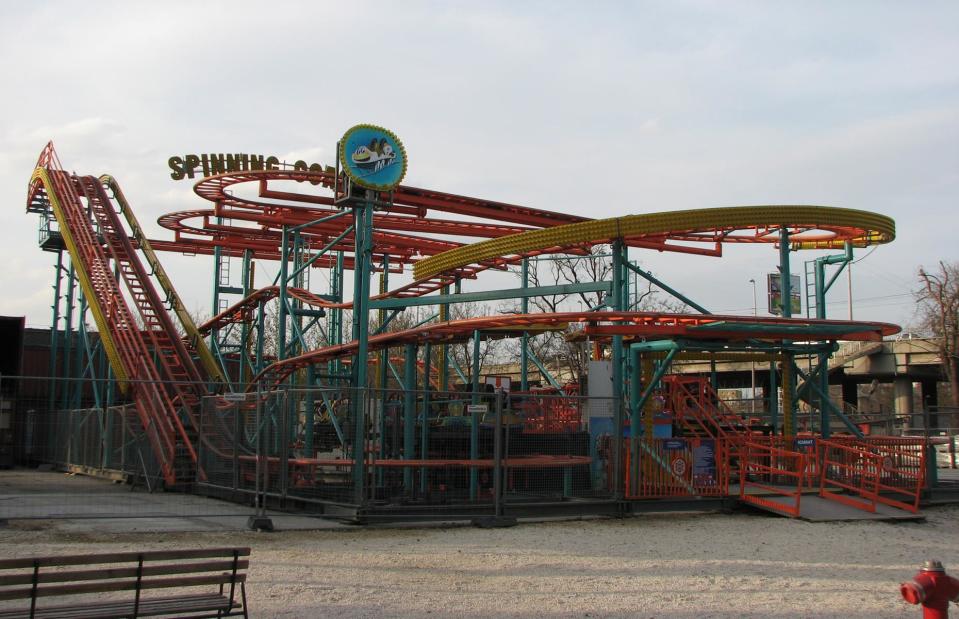
Jeremy Thompson/Flickr/CC BY 2.0
While it may not possess stunning architecture or natural beauty, this former amusement park was an institution for thrill-seekers. The attraction offered several historic rides, including the City Wave Roller, a wooden roller coaster built in 1922, and a carousel built in 1906.
Vidámpark, Budapest, Hungary

Illustratedjc/Wikimedia Commons/CC BY-SA 4.0
Unfortunately, the theme park was forced to close in 2013 after several years of declining visitor numbers. The site was swallowed up as part of an expansion of the neighboring city zoo, though a few rides, including the century-old carousel, were maintained.
Guaíra Falls, Paraguay/Brazil
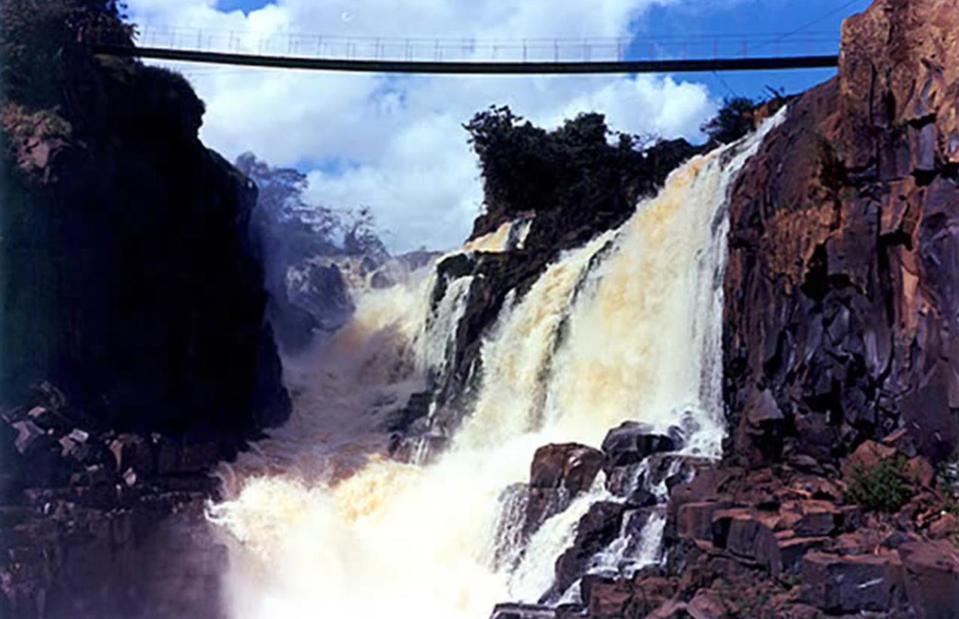
pombero008/YouTube
Thirty-seven years ago, on the border between Paraguay and Brazil, there lay one of the most powerful waterfalls in the world. Comprising a series of 18 falls, with the tallest 130-feet (40m) high, this natural wonder attracted tourists from across the globe, who were captivated by its immense power and beauty.
Guaíra Falls, Paraguay/Brazil

Noberto Duarte/Getty Images
In October 1982, the falls fell victim to a giant engineering project. They were closed and dynamited to create the Itaipu Dam, which now provides 75% of the electricity used by Paraguay and 25% of the electricity in Brazil. While this is clearly a viable source of renewable energy, whether it’s worth the price of such a wondrous natural spectacle is another question altogether.
West Pier, Brighton, UK
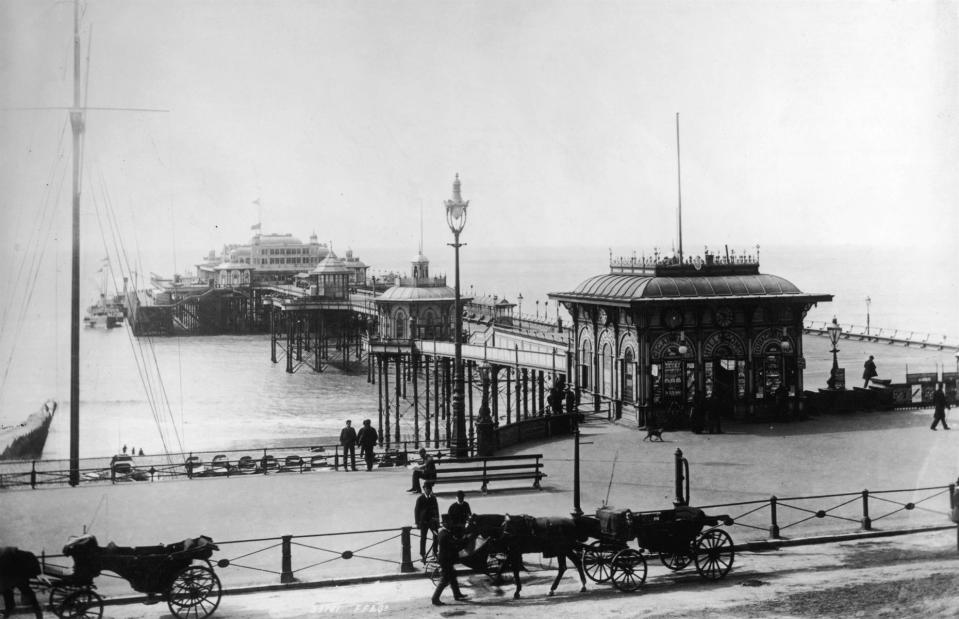
Francis Frith/Hulton Archive/Getty Images
Today, Brighton’s Palace Pier is a beloved attraction in this seaside town, but just along the coastline you’ll find the skeletal remains of an older pier. Opened in 1866, during the Victorian boom for seaside holidays, the West Pier featured a concert hall, funfair and tearoom and was extremely popular in the late-19th and early-20th centuries.
West Pier, Brighton, UK

Glyn Kirk/AFP/Getty Images
The West Pier went into financial decline in the 1960s, before closing in 1975 and falling into disrepair. Since then, it partly collapsed due to a storm in 2002 and caught fire the following year, in a suspected act of arson. Despite being mostly destroyed, the hollowed-out structure makes for a spooky yet beautiful silhouette for photographers.
Porcelain Tower, Nanjing, China
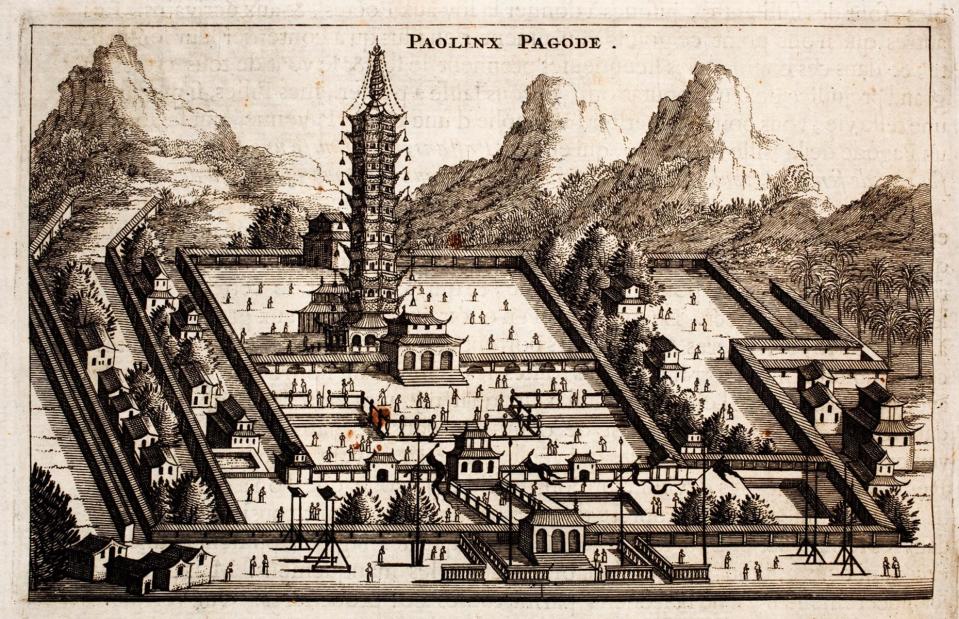
Jacob van Meurs/Johan Nieuhof/Wikimedia Commons/CC0
If you’ve ever smashed a piece of porcelain crockery, you might think that a 260-foot (79m) tower made from the stuff is not the smartest idea. Yet, surprisingly, this architectural gem lasted for around 400 years, from the 14th to 19th centuries, before being destroyed by rebels. In its day, it showcased a traditional pagoda style, adorned with colourful Buddhist imagery and lit up by lanterns at night.
Porcelain Tower, Nanjing, China
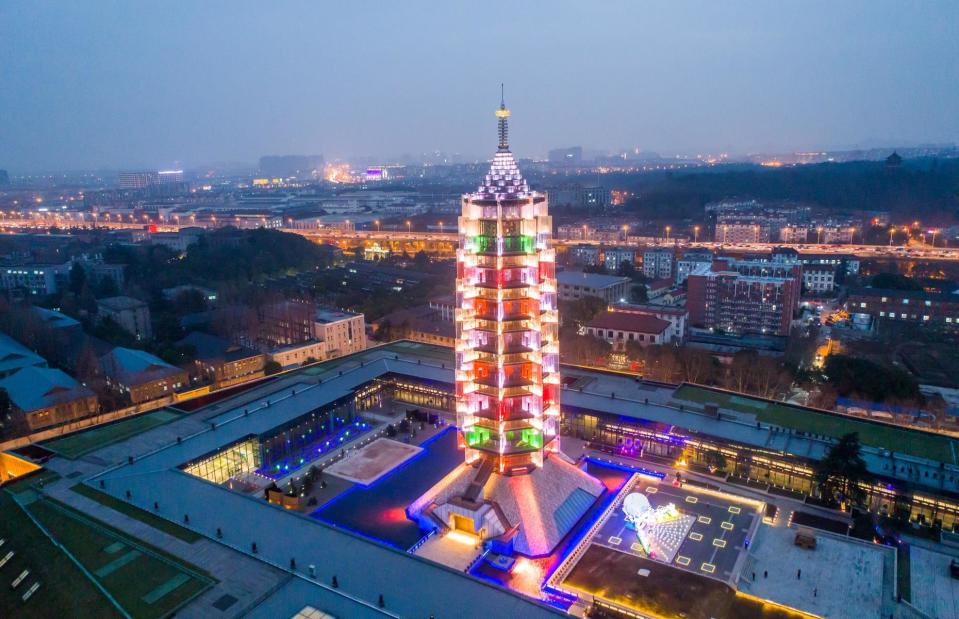
MyCreative/Shutterstock
In 2015, the tower was reborn in the form of a modern, steel and glass construction when property developer Wang Jianlin donated $153 million to the construction of a new building. Complete with multiple viewing platforms and surrounded by a futuristic Buddhist-themed museum, it certainly provides a new take on the historical site.
The Hippodrome Theatre, New York City, USA
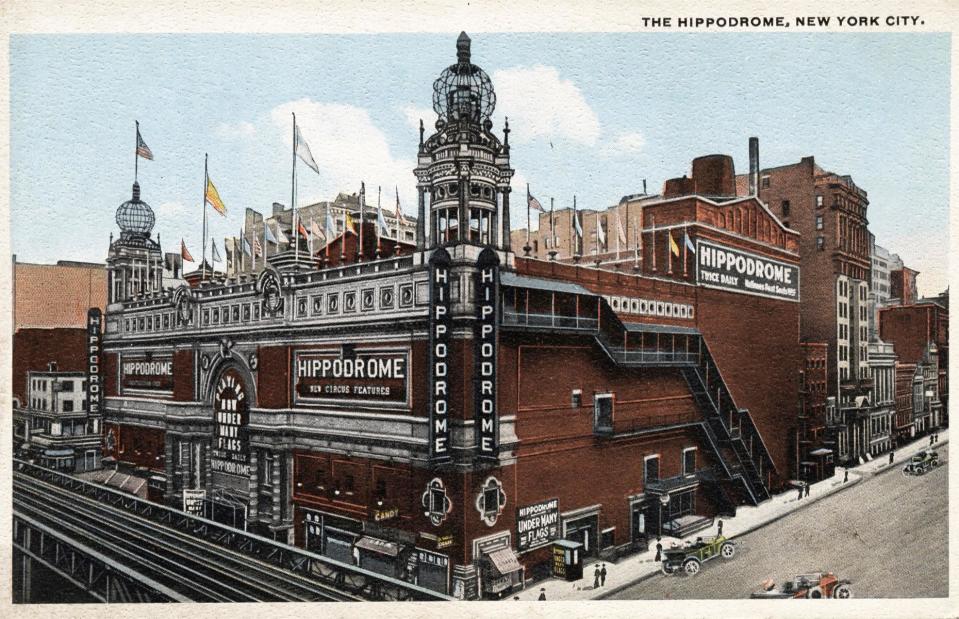
Susan Law Cain/Shutterstock
If you had walked down to 1120 6th Avenue in New York one hundred years ago, you’d have been greeted by the sight of this spectacular theater. The giant 5,697-seat Hippodrome was the brainchild of entrepreneurs Frederick Thompson and Elmer Scipio Dundy, who enticed new middle-class customers with lower ticket prices and made theater accessible for all.
The Hippodrome Theatre, New York City, USA

Beyond My Ken/Wikimedia Commons/CC BY-SA 4.0
As was the case for other grand turn-of-the-century buildings, the Hippodrome fell into the trap of high maintenance costs. Despite passing through the hands of numerous owners, it finally had to close in August 1939 and was demolished later that year. In the 1960s it was replaced by parking lot and an office building, which has remained ever since.
Jeffrey Pine, Yosemite, California, USA

David Schroeder/Flickr/CC BY-NC-ND 2.0
Yes, it’s just a tree – but it’s possibly one of the most photographed trees ever, after landscape photographer Ansel Adams brought it to fame back in 1940. With its dramatic, keeled-over shape, the tree became a popular photo stop for visitors to Yosemite National Park, and it showed the effects of more than 400 years of windy weather.
Jeffrey Pine, Yosemite, California, USA

John Krzesinski/Flickr/CC BY-NC-ND 2.0
Sadly, nature took its course and, in 1977, the tree finally died. However, it remained upright for some time, looking even more striking for its bleached wood, until 2003 when it toppled to the ground after a storm. Jeffrey Pine remains in its former spot and still fascinates hikers and photographers, despite no longer standing tall.
Love Locks Bridge, Paris, France

Stephane de Sakutin/AFP/Getty Images
This quirky tradition saw tourists flocking to the City of Love to express their amor by signing theirs and their partner's names on padlocks, before attaching them to the Pont des Arts over the River Seine. The practice became so popular that at one point the bridge contained one million padlocks weighing around 45 tons.
Love Locks Bridge, Paris, France

Stephane de Sakutin/AFP/Getty Images
But, in a slightly ironic turn of events, part of the fence here broke in 2014, due to the weight of these symbols of "everlasting" love. The following year, city officials began to remove padlocks and replace the bridge’s metal grilles with plastic panels, which have now been replaced by glass panels. Determined to keep the tradition going, some have begun to attach padlocks to lampposts along the bridge instead.
The Old Man of the Mountain, New Hampshire, USA
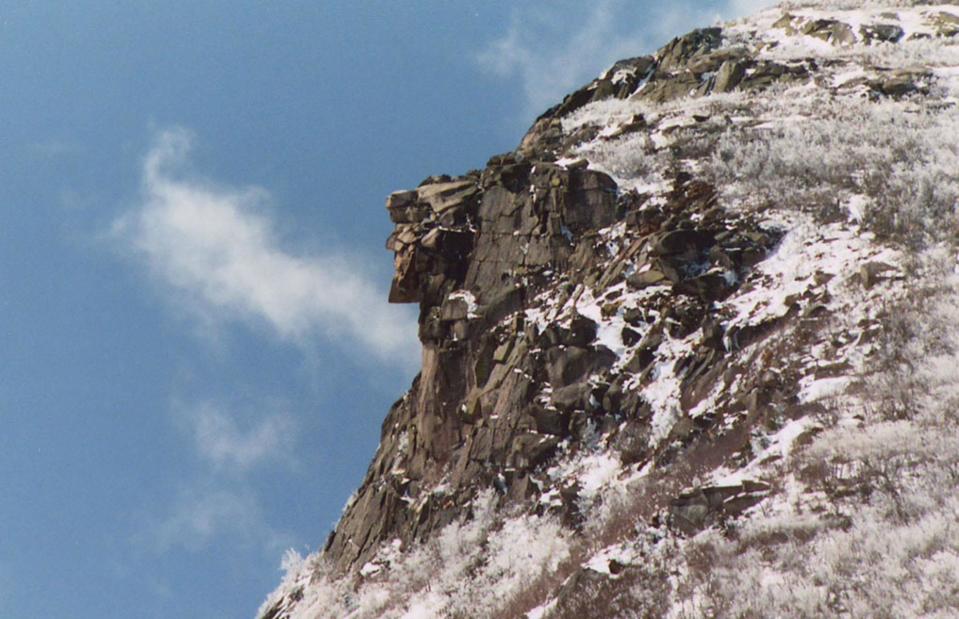
Jeffrey Joseph/Wikimedia Commons/CC0
Seen from a distance, this piece of rock jutting out from Franconia Notch might not have looked like much. But when seen from the north, the rock once resembled the profile of an old man, with a clearly-defined forehead, nose, lips and chin. Hence it became known as the "Old Man of the Mountain", an iconic symbol in New Hampshire.
The Old Man of the Mountain, New Hampshire, USA
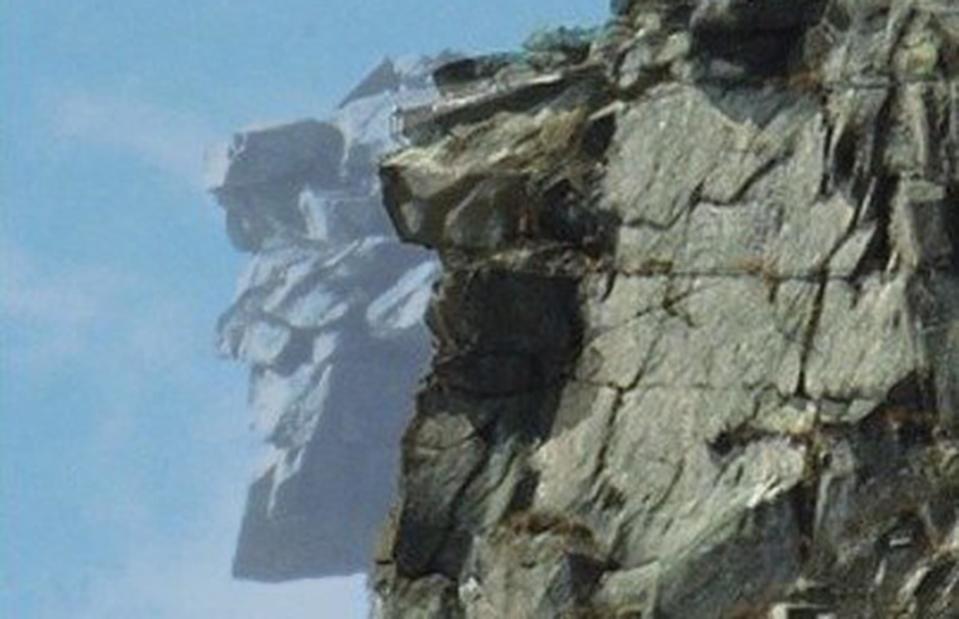
Rob Gallagher/Wikimedia Commons/CC0
After existing for an estimated 12,000 years, the poor Old Man fell off the mountain one fateful night in May 2003. Local people mourned the loss of their mascot, creating a memorial in Profiler Plaza at the base of the mountain. This picture shows the now-missing section.
Penn Station, New York City, USA

Everett Historical/Shutterstock
The former Penn Station, opened in 1910, was a striking sight: designed in the Beaux Arts style, it featured pink granite, vaulted glass windows, giant stone pillars and archways. Unfortunately, like many grand buildings, it cost a hefty sum to maintain, so in 1962 it was demolished – despite the backlash from many New Yorkers.
Penn Station, New York City, USA

EQRoy/Shutterstock
Today’s Penn Station – a smaller, underground network complete with neon lighting and all the mod cons – is a far cry from what it once was. But its modest size means that the now-increasing number of rail passengers puts an ever-surmounting strain on the building. As a result, plans have been put in place to expand it.
Royal Opera House, Valletta, Malta
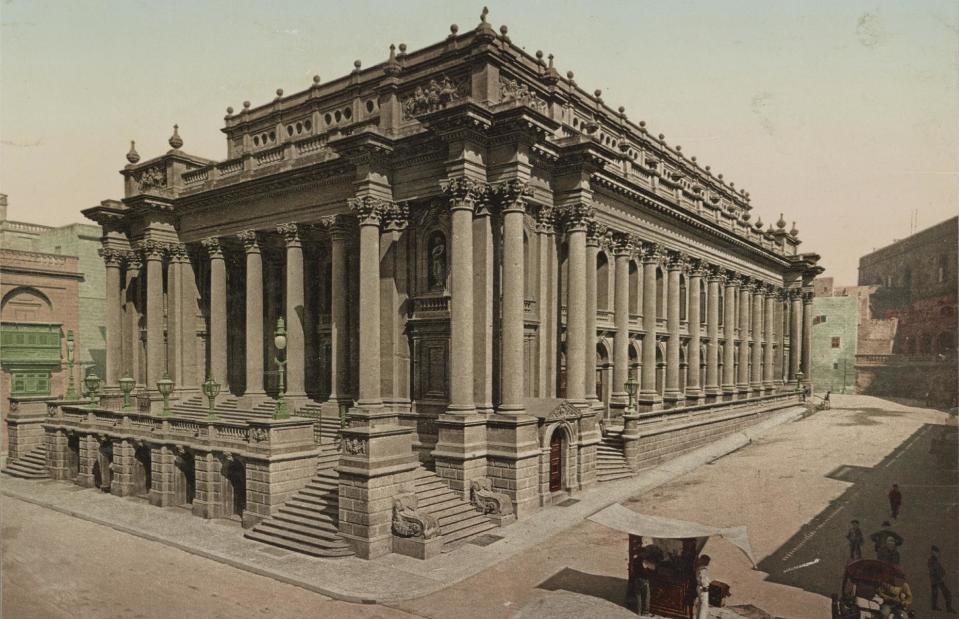
Photoglob Co., publisher/LOC via Wikimedia Commons/CC0
When Valletta’s Royal Opera House was built in the 1860s, it was a neo-classical jewel drawing big-name Maltese and international artists, as well as up-and-coming acts. Sadly, though, its life was short. In the 1870s, the venue was ravaged by fire and its interior was badly damaged.
Royal Opera House, Valletta, Malta
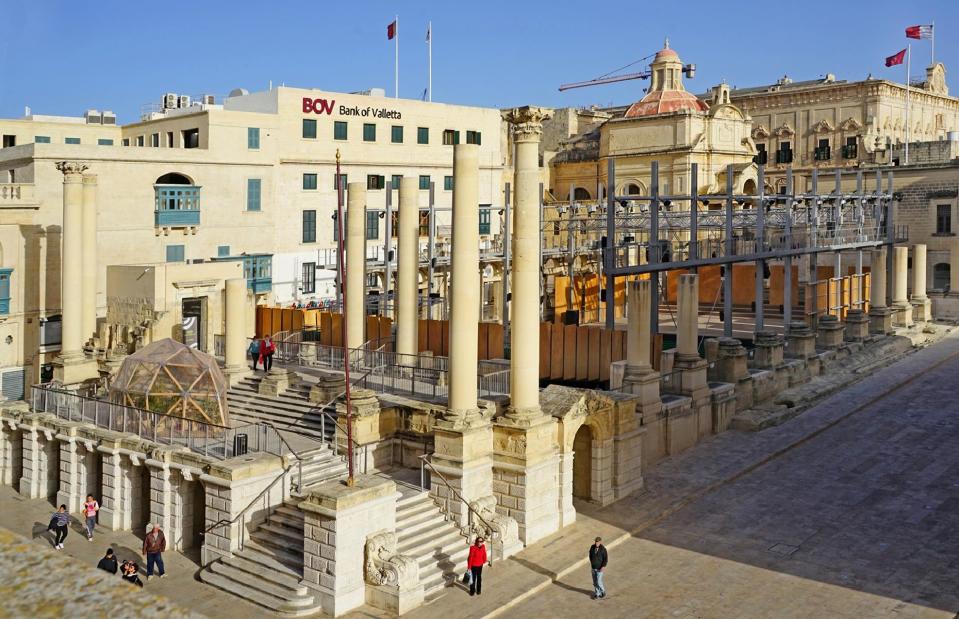
Jean-Pierre Dalbéra/Flickr/CC BY 2.0
The Opera House was restored and reopened shortly afterwards, only to be gutted again by a direct bombing during the Second World War. This time the building remained in ruins. For a long time, it stood vacant, until Italian architect Renzo Piano repurposed the destroyed theater as an open-air performance venue. Now, once again, music lovers come to hear the sound of swing, jazz, opera and more from within the theater’s remaining columns.
15 destinations around the world that are nearly impossible to visit

